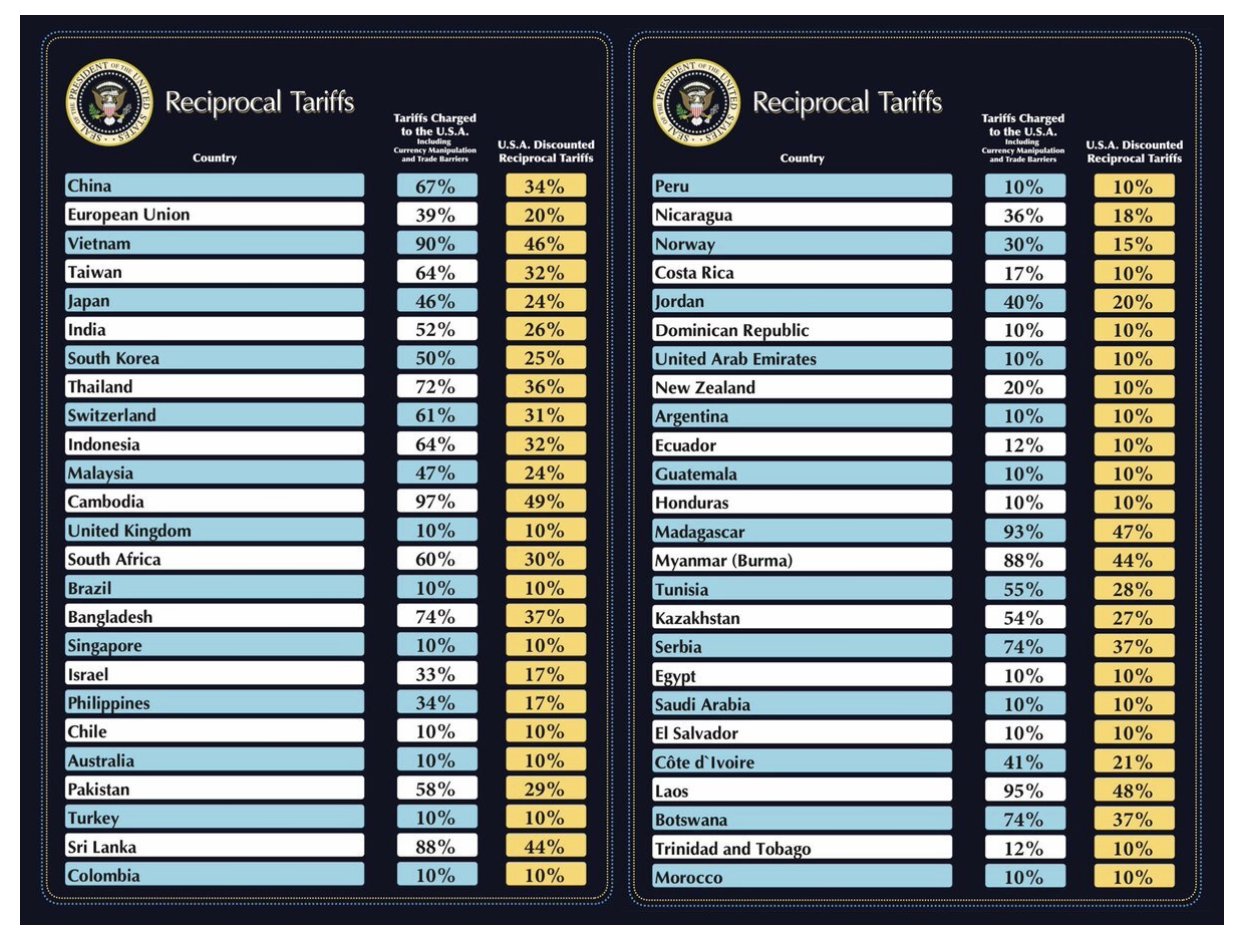The Good, the Bad and the Ugly: Trump’s reciprocal tariffs rock the market
All in all, the tariff announcement could have been worse, but it could also have been a lot better. Here is the good, the bad, and the ugly of US President Donald Trump’s “Liberation Day” reciprocal tariffs.
The Good
- Trump did not indicate that he plans further and more aggressive tariffs from here.
- Tariffs weren't applied "1 for 1", with reciprocal tariffs lower for most trading partners.
The Bad
- There wasn't much talk of being open to negotiating these tariffs down. So more clarity is needed; that may come in the coming days
- There was a lot of rhetoric about effectively restructuring the US economy. Greater protectionism. Will the upheaval continue?
- There was no clear indication that the Trump administration will stop here with "trade wars" . That could mean further uncertainty.
The Ugly
- The level of tariffs on aggregate are on the high side, so markets need to discount a bigger shock to the economy.
- Tariffs on China lift the overall level to around the 60% President Trump threatened during his election campaign.
The biggest issue seems to be the absolute level of tariffs outlined in the plan. While each trading partner will experience a targeted tariff matching or lower than that which is applied on the US economy, in the aggregate, the level of tariffs will be roughly 20% – on the high side of what was estimated. Ultimately, the markets have to price in a slightly greater growth shock than what was already priced-in, not just on the US economy, but also the rest of the world. That alone explains the drop in US futures – the tariffs were announced after the close – the rally in haven currencies like the Yen, the boost in gold, and the sell-off in oil prices.

(Source: Bloomberg, The White House)
There’s also a high degree of ambiguity still, with “Liberation Day” not providing enough certainty, or at least the degree of certainty that market participants were looking for. While there was little bombast and threats of even higher tariffs, President Trump gave no reassurance that this marks the end of tariffs or whether there’s room for negotiation with trading partners to massage these tariffs lower. On top of that, there was strong rhetoric about the virtues of protectionism, hinting that the administration may remain intent on shaking up global trade further and restructuring the US economy – although equally, there was no explicit message about future policies to bring that about.